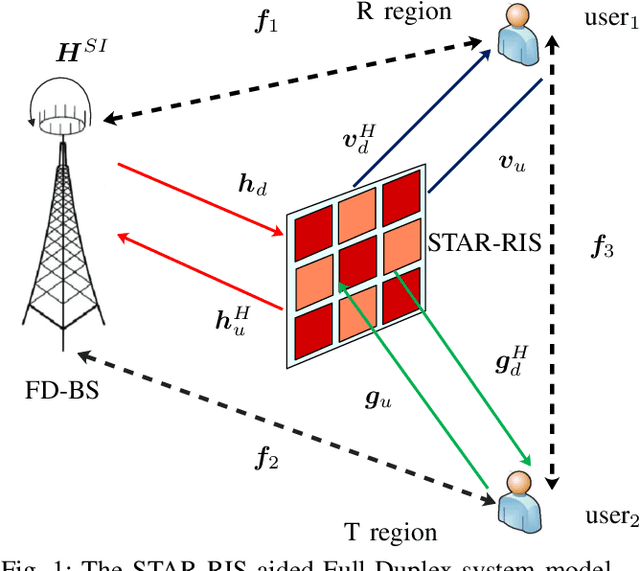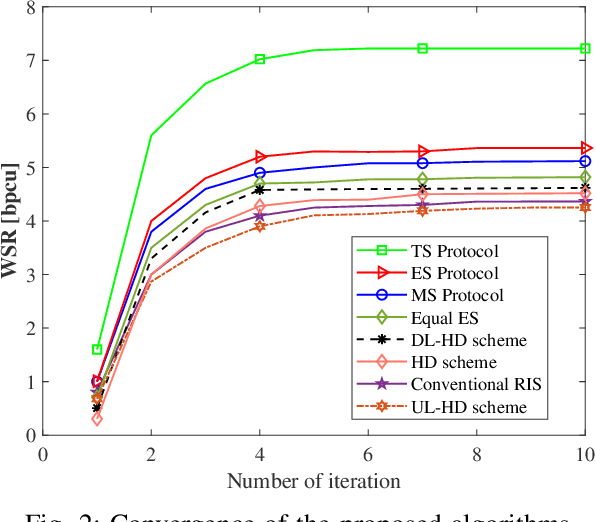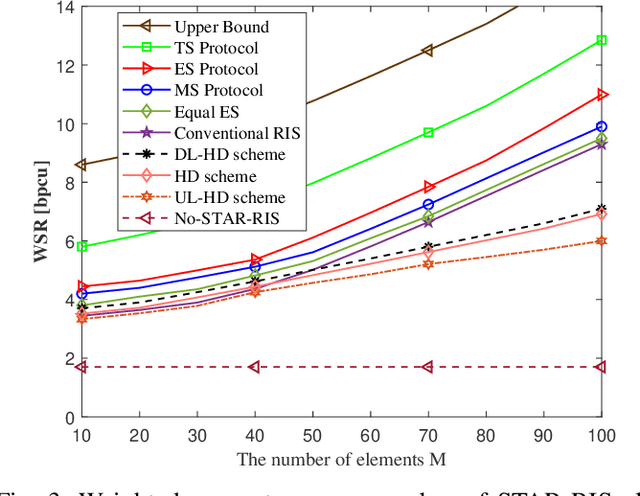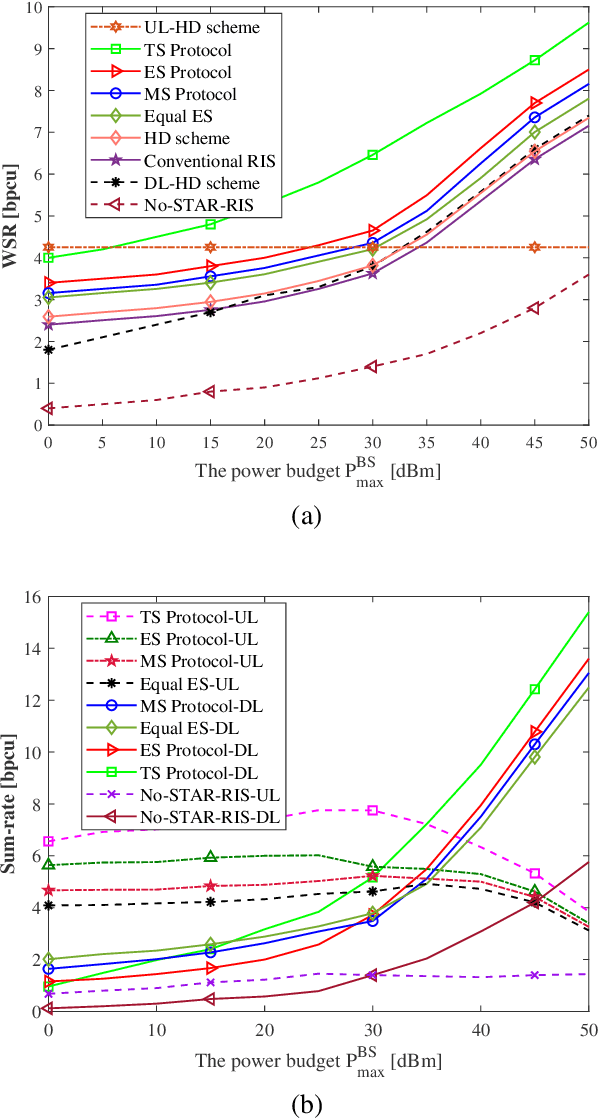Resource allocation of STAR-RIS Assisted Full-Duplex Systems
Paper and Code
Sep 18, 2022



Well-designed simultaneously transmitting and reflecting RIS (STAR-RIS), which extends the half-space coverage to full-space coverage, incurs wireless communication environments to be smart and reconfigurable. In this paper, we survey how STAR-RIS affects the performance of full-duplex communication systems with the presence of full-duplex users, wherein the base station (BS) and the uplink users are subject to maximum transmission power constraints. Firstly, the weighted sum-rate (WSR) is derived as a system performance metric. Then, we formulate the resource allocation design into an equivalent weighted minimum mean-square-error form and then transform it into several convex sub-problems to maximize the WSR as an optimization problem which jointly optimizes the beamforming and the combining vectors at the BS, the transmit powers of the uplink users, and phase shifts of STAR-RIS. Although the WSR optimization is non-convex, an efficient iterative alternating procedure is proposed to achieve a sub-optimal solution for the optimization problem. Secondly, the STAR-RIS's phase shifts are optimized via the successive convex approximation technique. Finally, numerical results are provided to explain how STAR-RIS improves the performance metric with the presence of full-duplex users.
 Add to Chrome
Add to Chrome Add to Firefox
Add to Firefox Add to Edge
Add to Edge